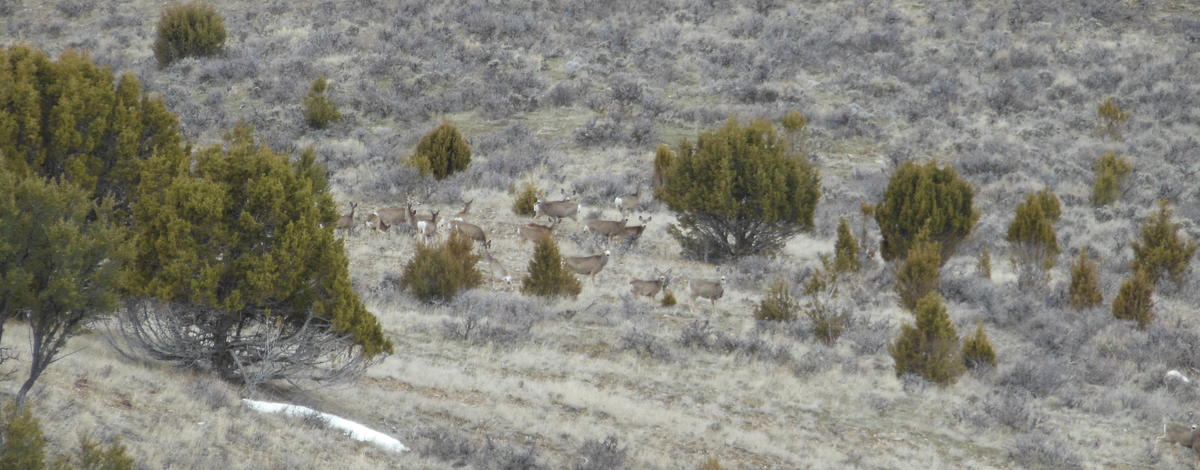A day on the Soda Hills winter range in GMU 72 just outside of Soda Springs.
While there, IDFG staff noticed the Pocatello BLM field office was there burning piles of junipers that had been cut previously. These juniper treatments are used to create fire suppression fuel breaks and to rejuvenate sage steppe from encroaching junipers. The BLM plays an active role in winter range management in the Soda Hills.
The deer are looking good, but every year fawns die on winter range. On an average winter in this part of the state about half of the fawns die. Fawn mortality is usually climate driven on this winter range, and this fawn was in poor body condition. The femur marrow of this fawn was non-existent, on a healthy fawn it would be full of a waxy white to yellow marrow.
Evidence of winter browsing of bitterbrush and mountain mahogany on the winter range. Winter browse slows the depletion of winter fat reserves. Fat reserves are accumulated on summer and transition ranges and play a vital role in over-winter survival in mule deer.

